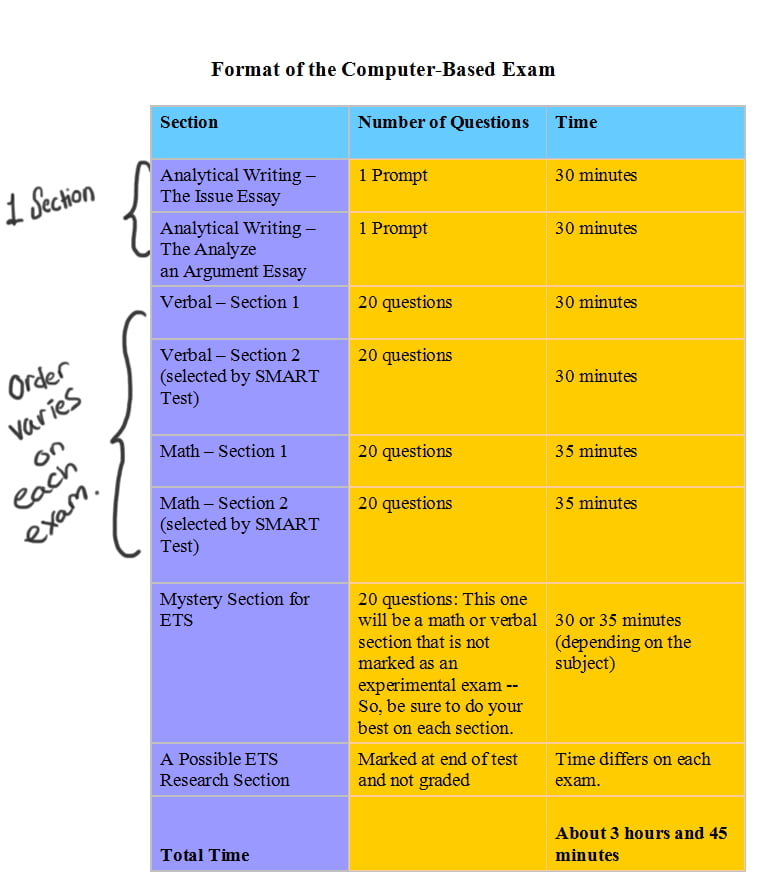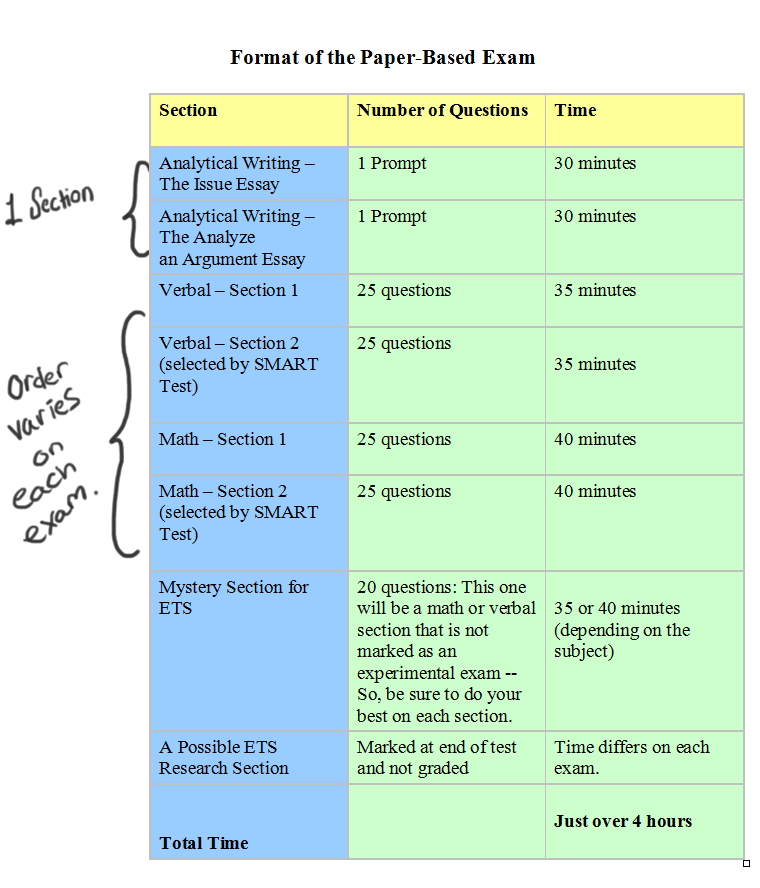01. An Inside Look at the Revised GRE
An Inside Look at the Revised GRE
What is the GRE?
The Graduate Record Exam, or GRE, allows graduate admissions offices and fellowship programs to compare the performance of applicants on 3 different sets of skills: analytical writing, verbal reasoning, and quantitative reasoning. Earning a master's degree or PhD gives students the opportunity to become an expert in a field and also greatly increases their potential income. Since these applicants from the United States and countries all over the world have vastly different educational experiences, the GRE allows graduate schools to see if the students are ready for the demands of graduate-level work.
Why was the Exam Revised?
The GRE was revised in 2011 to improve the way that ETS scores the exam and to better reflect the skills that most students will need in their graduate programs. In the past, the computer-based test adjusted its level of difficulty after each question. The revised test simplifies this process: it only makes one adjustment to the test's difficulty. After a student finishes the first section, the test will see what percentage of the questions are correct. If it's a high percentage (the exact number varies), then the student will receive a test with difficult questions in the second section. Though that seems like a penalty, this test gives the student a chance to earn a perfect score, or at least an extremely high one. The students who do not have as many correct answers on the first section will receive a second section that is less difficult. They will still be able to earn a good score, but they will not receive as many points as the students who took a more difficult version of the test.
The GRE also changed some of its content in order to test students on skills that they will most likely need in order to earn a master's degree or PhD. The analogies and antonyms questions have been dropped, but developing a broad vocabulary is still key for the text completion and sentence equivalence questions. Both question types ask students to choose the word or words that best complete a sentence. The math section did not allow students to use a calculator before this point, but they will now be given an ETS-issued calculator. Computer-based test takers will see one on screen when they take the exam, whereas paper-based test takers will be given a basic calculator to use. The catch is that this change allows ETS to make the questions on the quantitative reasoning section more complex.
How Can I Study for the New Exam?
You can still outsmart this test by actively studying for the exam. The features on Brainfuse will help you keep track of the skills you need to develop and offer you the chance to work with live GRE tutors. They can help you identify challenging problems and learn how to solve them on your own. You will also have access to our collection of lessons and videos on the skills that you need to master by the time you walk into that test center.
The GRE Deconstructed
Before you take this exam, it is important to know what you’ll be asked to do on it. The tables below break down the two types of GREs: the computer-based test and the paper-based exams. Most people take the computer-based exam. Although the order of the math and verbal sections vary, this table shows the exam's sections and the time you will have to complete each one.
This exam has a shorter math section than the paper-based exam, and the computer will let you see your unofficial scores on the math and verbal sections at the end of the test. Here is the format of the paper-based exam:

Notice that each math section on this test is 5 minutes longer than the math sections on the computer-based test. Once you complete the test, you will also have to wait for 5 to 6 weeks to receive your scores.
Which Format Will Be Best for Me?
If you are living in the US, ETS will encourage you to take the computer-based test. It is available at many more test centers and administered much more frequently. The paper-based test centers cannot facilitate a GRE exam more than 3 times per year.
Despite their preferences, you can still take the paper-based test without traveling to France (That was actually my plan when I first heard about the paper-based GRE). You can find the paper-based test centers and dates on ETS's website. Right-click the following link to open in a new window:
https://www.ets.org/gre/revised_general/about/content/pbt/
You'll see that many of them are based at a college or a university.
So, which format is best for you?
See the "Make Your Appointment @ the Test Center" link to learn how to sign up.
http://admin.brainfuse.com/curriculumupload//1359729687544.html